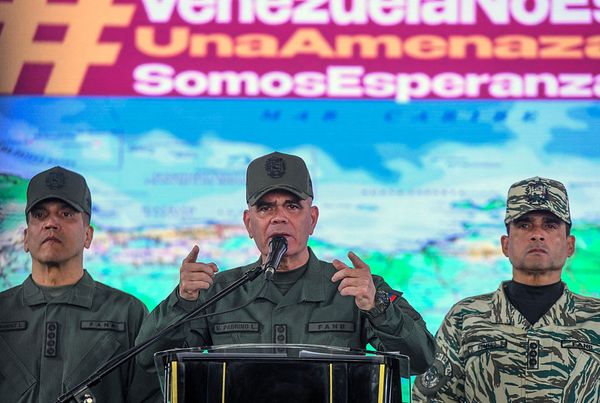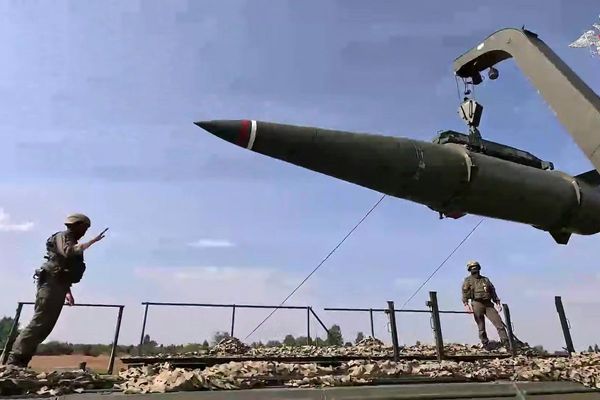
When the US announced the withdrawal of duty-free entry for Indian exports worth around $6 billion on 4 March last year, it brought the curtains down on a year-long dialogue between the two strategic partners to hammer out a limited trade package. In a hurriedly called press briefing early the next day, India’s trade secretary Anup Wadhawan blamed the “disproportionate demands” by the US for collapse of the talks.
If both sides fail to close the limited trade deal during President Donald Trump’s visit to India as they have indicated, it would be third time unlucky as the deal was expected to be signed in September last year during Prime Minister Narendra Modi’s visit to the US to attend the United Nations General Assembly meeting.
Despite their robust diplomatic ties, India and the US have quibbled on trade over the years and across administrations. However, President Trump, who pursues an “America First” approach, has been personally very vocal about the perceived high tariff walls that India has put and has often termed it the “tariff king”. India, however, denies the charge of being a high-tariff nation, holding that its tariff regime is fully compliant with its commitments under the World Trade Organization (WTO) rules.
However, to accommodate the US complaint about the $18 billion trade surplus that it enjoys, India has increased buying crude oil and civilian aircraft from the US in recent times. Still, the US fixation over tariffs, e-commerce restrictions and data protection bill have put India in a spot.
The limited trade deal was expected to cover tariff concessions for US farm products including removal of higher duties imposed by India on 28 American farm products such as almonds, apples and walnuts, new pricing mechanism based on trade margins for medical devices, information and communication technology products as well as the high duty that India places on Harley Davidson motorcycles.
In return, New Delhi has been asking for exemption from high duties imposed by the US on certain steel and aluminium products, restoration of benefits accorded to Indian exporters under the generalized system of preferences, which was terminated by the Trump administration on 5 June, and allowing import of farm items such as grapes and mangoes. India has also demanded restoration of “developing country” status under American domestic law. The US earlier this month removed India from the list of developing countries which will now allow the US to penalize India for any “unfair” trade subsidies.
India’s official foreign affairs spokesperson Raveesh Kumar in his weekly briefing on 21 February said that India hopes to reach an understanding with an outcome that strikes the right balance for both sides in the complex negotiations. “We would not like to rush into a deal as the issues involved are complicated and there are many decisions which actually could affect or impact lives of millions of people on the ground and some also with long term economic consequences. So we don’t want to create any artificial deadline,” Kumar had said.
China factor
There is a China factor at play. Any tariff cut by India to allow greater import of US goods needs to be done in a non-discriminatory manner for other countries as per WTO rules, as both the countries are not negotiating a free trade agreement at present. For example, duty cut on high-end mobile phones as demanded by the US side will benefit China as Apple Inc. manufactures most of its iPhones there. Indian commerce ministry in its 5 March statement last year raised the same fear. “On reduction of our IT duties, India’s duties are moderate and not import stopping. Any MFN duty reduction would almost entirely benefit third countries,” it added. With over $50 billion trade deficit with its Northern neighbour, India is obviously not keen to increase imports from China.
Similarly, if India cuts duty on high-powered, fully-built motorcycles to satisfy Trump’s fascination to sell more Harley-Davidson bikes in India, it may actually benefit similar other brands such as Triumph (British), Yamaha (Japanese), and Ducati (German-Italian).
India’s trade conservatism
Prolonged negotiations for the Regional Comprehensive Economic Partnership (RCEP), which India exited at the last moment, seems to have fundamentally changed the thinking of the Modi government on its trade engagements. Not only does it now flex its muscles with smaller trade partners like Malaysia by putting restrictions on palm oil imports, it has increased tariffs on a host of products like toys and furniture, which it calls non-essential items. Open calls for import substitution and the turn to local goods have prompted cries of protectionism from critics.
After the Union Budget 2020-21 imposed a health cess on imports of medical devices amid talks between India and the US to find a way out of India’s price caps on stents and knee implants, Nisha Desai Biswal, president of the US India Business Council in an interview said she expects the US government to seek clarifications on the matter from the Indian side.
“People are asking themselves why now and how this makes sense. I would imagine that it will be an issue of discussion between the two governments because finding a way forward on medical devices has been such an involved conversation between the two governments,” she added.
Further signalling that India is in no mood to give a walk-over on the proposed trade deal with the US, Goyal at an industry event on Thursday said: “I can assure you that just like in RCEP negotiations (where) India stood its ground, India’s decision on opening up our markets will rest on our imperatives for trade, not diplomacy. The same principle is going to be continued forward when we talk to any other country. India’s interests will be paramount,” he added.
The future of the India-US trade relationship will depend on how patient and considerate the US remains towards India’s development concerns and the flexibility that India can show within its self-imposed redlines.







